This story originally appeared in an issue of Street Chopper.
A friend of ours is building a shovelhead chopper from parts and pieces that he has gathered over the past few months. Swap meets, friends, and word of mouth leads have brought most of the parts needed for the chop into a small one-car garage. A big twin swingarm frame with a weld-on hardtail section forms the basis for the new bike. A 1978 shovelhead engine was found, hauled home, and mounted into the completed frame. From this point on, the rest of the components were added until a running mock-up rolled out of the garage and into the sunshine. The engine was supposed to be “fresh,” but once fired up, the resultant top-end noise and the growing puddle of motor oil told a different story. The oil leak was from the open port in the engine cases for the primary oil feed. A simple pipe plug fixed the oil leak and the noise originating in the top end (i.e. the rocker boxes). The rest of the engine sounded OK, but we decided to check it out once the mock-up was completed.
Once the engine was out of the frame we mounted it on an engine stand and removed the top end for a look-see. The pistons and rings looked and measured out in the allowable tolerances, same for the valves and guides; they in fact did look "fresh". The rocker boxes were another story: the bushings in the rocker arms were worn pretty bad, and the tips of the rocker arms that push on the valve stems were grooved and pitted; all four rocker arms needed to be resurfaced. The other factor that contributed to the noise we heard was the excessive amount of endplay between the rocker arms and the rocker box. The factory specifications called for .004-.025-inch. In two rocker arm locations we had over .035-inch endplay, and as far as the rest of the rocker arms we had almost the maximum allowable end play.
The above description of the ’78 rocker boxes may sound like a mess, but it really is not that big of a deal to fix. We’ll describe how we went about rebuilding the rocker box assemblies for a quiet, oil-tight operation. There are some special tools you will need in order to perform this task correctly. The tools are not that expensive, especially if shared with a couple of friends; in fact, some of the tools cross over to Sportster, Evo big twin, and twin cam model rocker arms, also.
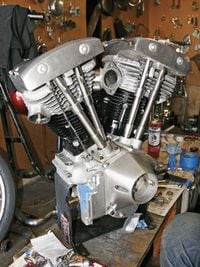
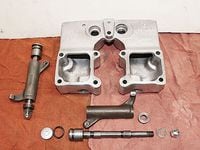
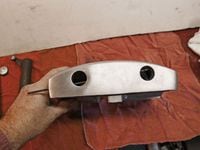
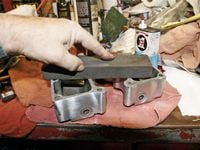
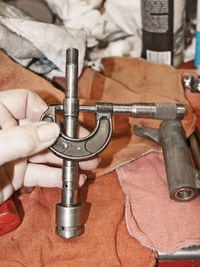
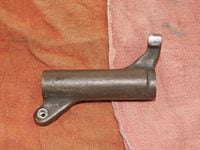
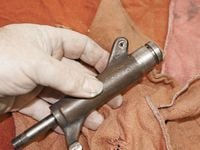
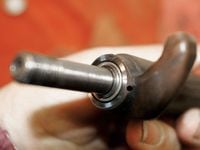
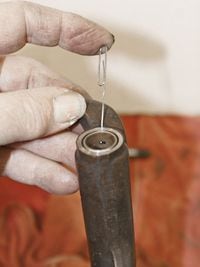
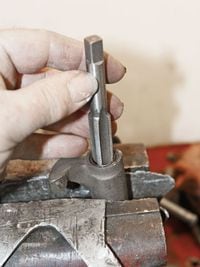
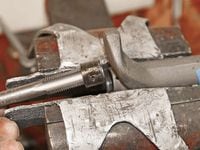
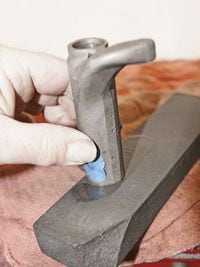
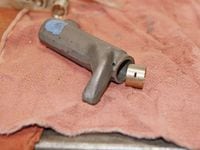
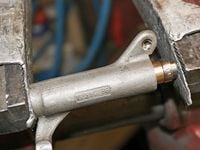
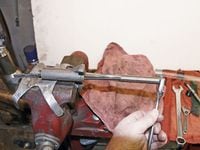
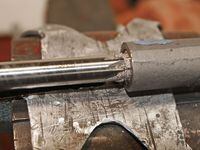
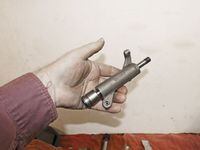
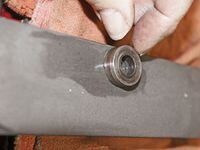
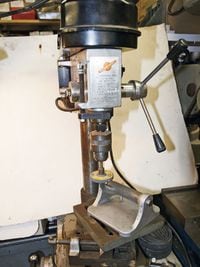
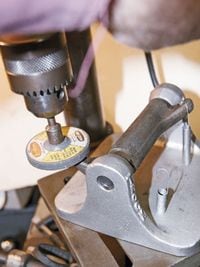
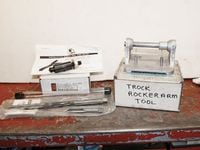
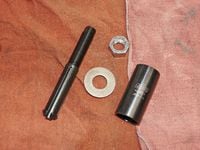
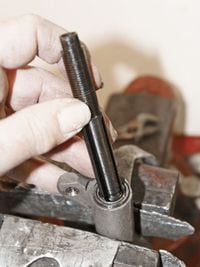
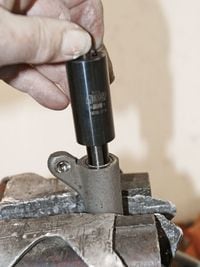
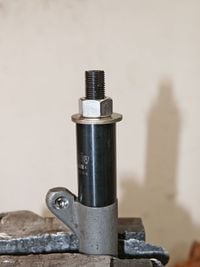
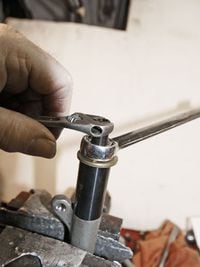
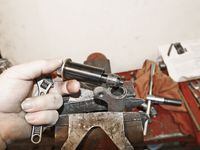
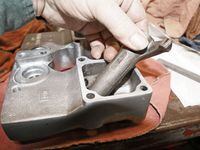
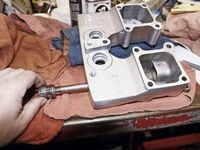
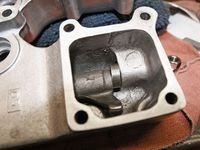
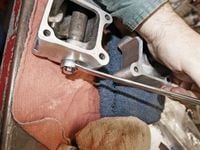
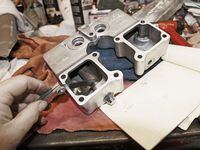
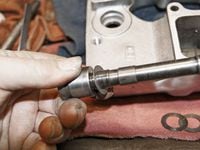
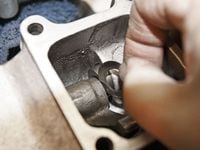
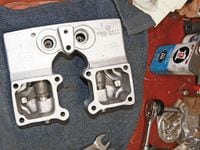
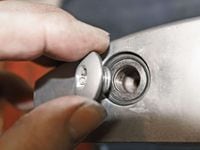
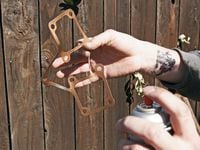
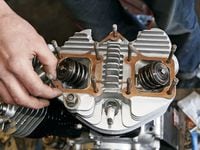
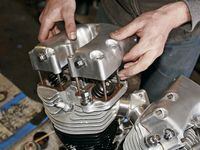
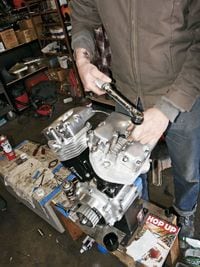
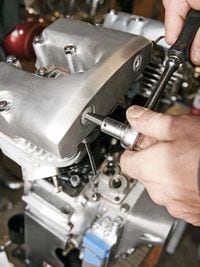
/cloudfront-us-east-1.images.arcpublishing.com/octane/HV4KF6WQSRB7XI4BIXC3RAJQFQ.jpg)
/cloudfront-us-east-1.images.arcpublishing.com/octane/P2LSTY5BCFBZLJGGNI4DEVDO7M.jpg)
/cloudfront-us-east-1.images.arcpublishing.com/octane/5LEGP6BLLFFZLHN5TTMCCZ22MU.jpg)
/cloudfront-us-east-1.images.arcpublishing.com/octane/TU6DMZ5T5BF7ZM7XZE423NYY5E.jpg)
/cloudfront-us-east-1.images.arcpublishing.com/octane/6Q6STI2LZRE7RO7QP3GE2Z5O44.jpg)
/cloudfront-us-east-1.images.arcpublishing.com/octane/LYYK456NX5F5VNKSPTUSHTASKI.jpg)
/cloudfront-us-east-1.images.arcpublishing.com/octane/VERLFNKGMFD5PF7LTO36SZHE5I.jpg)
/cloudfront-us-east-1.images.arcpublishing.com/octane/3CO62C5IXRBM5BAPHB76TAXHUI.jpg)
/cloudfront-us-east-1.images.arcpublishing.com/octane/53TUAZ54EZDDVELZWIQOJ77LZU.jpg)
/cloudfront-us-east-1.images.arcpublishing.com/octane/UB5OCJTWGVHD5KV2EXV5TCE26I.jpg)
/cloudfront-us-east-1.images.arcpublishing.com/octane/6QECQVWB2BDK7OG2QW4EA3WMGY.jpg)
/cloudfront-us-east-1.images.arcpublishing.com/octane/DGIAM3JL3NDX5PCO6UGBX3LMHY.jpg)
/cloudfront-us-east-1.images.arcpublishing.com/octane/BBRJK6WMSNHUHI7I55DE5RPCWM.jpg)
/cloudfront-us-east-1.images.arcpublishing.com/octane/LKHU4UAE7ZGGLPO2O5VHGIW2Y4.jpg)
/cloudfront-us-east-1.images.arcpublishing.com/octane/Z6GV5LJNJRHM3IELT4YDOJ5UEM.jpg)
/cloudfront-us-east-1.images.arcpublishing.com/octane/7RQAVTPPBVDURG5DHS5VYXONGM.jpg)
/cloudfront-us-east-1.images.arcpublishing.com/octane/L777GGKCZNEAJDLNMWOAZOSREM.jpg)
/cloudfront-us-east-1.images.arcpublishing.com/octane/UJF7SSJJ4RH2JGX5GYCKYHCP7A.jpg)
/cloudfront-us-east-1.images.arcpublishing.com/octane/5GDLAHSFVBBDHFMUYNDCJRWIGY.jpg)
/cloudfront-us-east-1.images.arcpublishing.com/octane/QDHWRY5W6BDRTPJZCXRY34S4HA.jpg)
/cloudfront-us-east-1.images.arcpublishing.com/octane/GN7YNWOJLNCF3LOYLMW23VT6SY.jpg)
/cloudfront-us-east-1.images.arcpublishing.com/octane/LKBGRXLO3JEMHFYZ54OYBBPKO4.jpg)
/cloudfront-us-east-1.images.arcpublishing.com/octane/ZV6O7QQYCZALTODZUXKM37PJRQ.jpg)
/cloudfront-us-east-1.images.arcpublishing.com/octane/7VYGDZ4AJFFY5DM5DJI6B4R6AA.jpg)